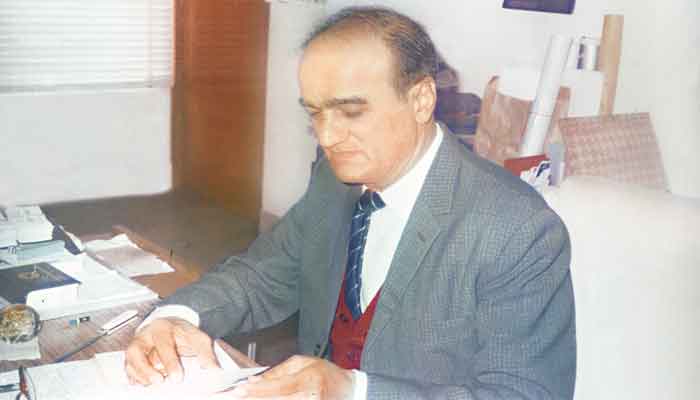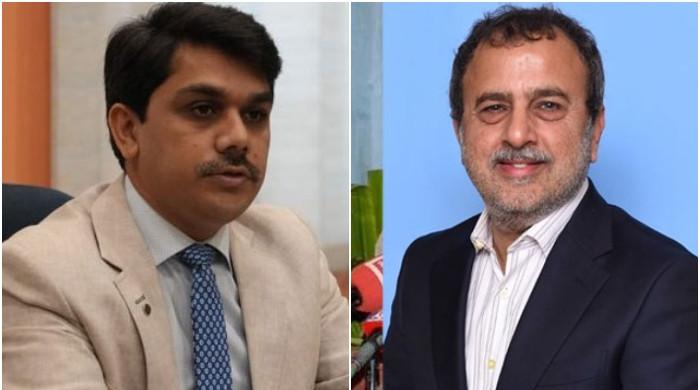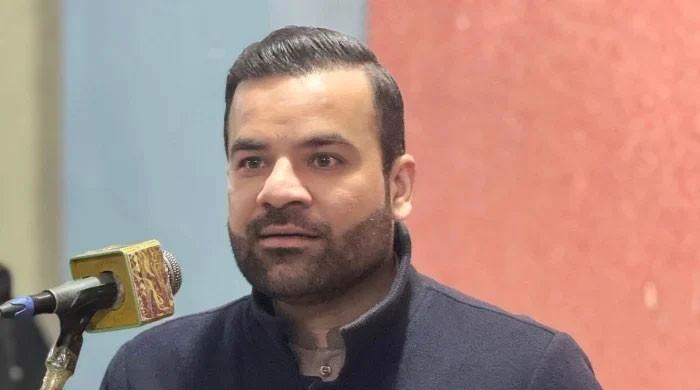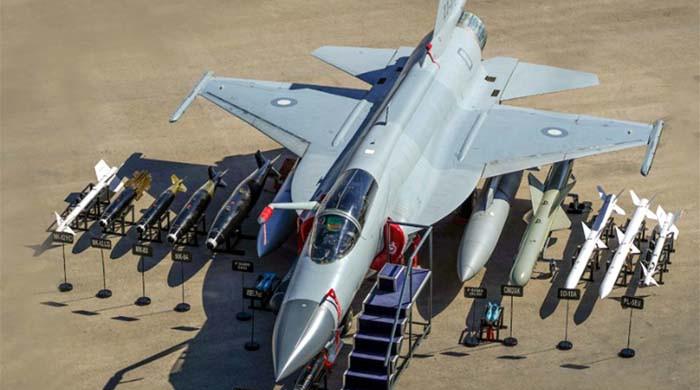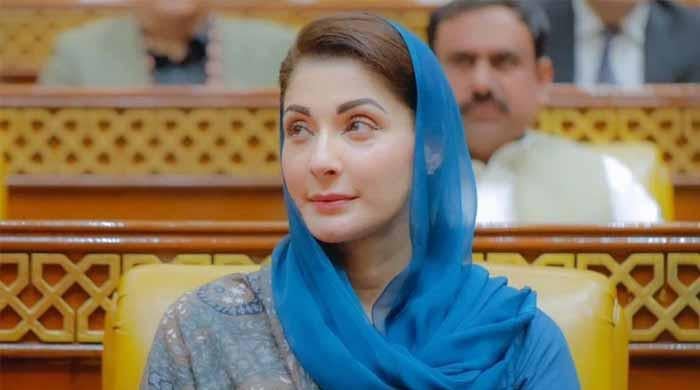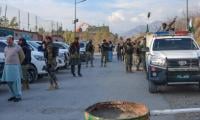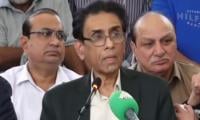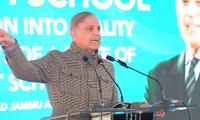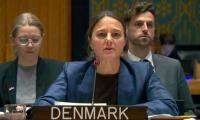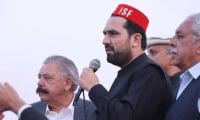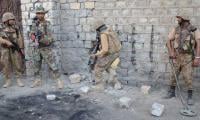Mir Khalil-ur-Rahman: A legend lives on
It is indeed, a challenge to size up an icon of a man who made Pakistani journalism much of what it is today. It is like putting together waters of many oceans in space like that of Rawal Lake. His life was multifaceted, each facet more glorifying than the other.
It was my good fortune to have been born to a father, late Syed Shamsul Hasan, who was associated with All-India Muslim League, Quaid-i-Azam Muhammad Ali Jinnah and Liaquat Ali Khan from 1913 until after the birth of Pakistan. As a youngster I had the privilege to have had exposure to some of the big wigs in politics and journalism. It is always a pleasure to reminiscence about a person who had been many things to me in most part of my life. That’s what Jang/Geo’s founder Mir Khalil-ur-Raham was to me with whom my association lasted for more than 30 years until his death.
It is indeed, a challenge to size up an icon of a man who made Pakistani journalism much of what it is today. It is like putting together waters of many oceans in space like that of Rawal Lake. His life was multifaceted, each facet more glorifying than the other. I can never forget a meeting with him for the first time in my life. Those were the days when Jang had a small office on Elander Road (off interjection of I I Chundrigar Road). Incidentally, besides Jang there were three other newspapers being in the market at that time. We regularly visited the lane for buying family supply of pan as both my father and mother were addicted to chewing pan. Once my father took us to Jang’s office and there we met a gentleman who was dusting the furniture. That was Mir Khalil-ur-Rahman or MKR (as he is usually called with this acronym by his colleagues)-a humble man who started his climb from the lowest rung to the pinnacle of success, fame and honour earned through dint of his hard work and dedication.
His life was a challenge all through. As a young graduate, instead of seeking future in normal business, MKR found himself bitten by the bug of freedom, to seek and not to yield. It was onerous task. Having no proper financial means of sustaining a daily newspaper, he had the spirit and determination to pick up the gauntlet to fulfill his ambition and Quaid’s mission for a Muslim mouthpiece in Urdu. His perseverance showed the way forward and his unflagging spirit made Jang a household name in pre-partition Delhi and it became a flag bearer for Muslims’ struggle for freedom.
How was Jang made a household name in no time is a long story that leaves many lessons to be learnt. Those were the days of the post-Industrial Revolution transformation in India in the print media. While the indigenously-owned English, Hindi and other vernacular newspapers had made their mark by the time World War II had erupted, technology for Urdu printing was in a rudimentary phase; it was expensive and cumbersome too. Yet MKR caught the bull by the horn to launch Jang and since his was one-man show-he made it big by being its printer, publisher and distributor all by himself. He used to sell his newspaper on his bicycle with no additional hands to support. And once he had sold first few hundred copies of Jang, he would rush to paper market, buy extra rolls and rush back to the press to have reprints several times in a day. Brick by brick he built his Media Empire that stands as a colossus today as a most glowing tribute to the man who made it from rags to riches.
I joined as an apprentice in Daily News in Jang group in 1962 and I can say without any fear of contradiction that whatever I achieved as a journalist-editor, I owe every bit of it to MKR, his tutoring, his grooming and his experience to extricate oneself out of a difficult situation least scathed in periods of worst media censorship, controls and intimidations. Despite the fact that his stakes were high and his huge financial interests were under a constant threat of being taken over by the government-he did not compromise on issues of freedom of expression.
As the Editor of Daily News as well as Weekly Mag, I can write volumes on difficulties MKR faced on account of the aggressive manner we fought back General Zia-ul-Haq’s draconian censorship when even printing of the truth in the best national and public interest was a crime. One could not even print the Quaranic Ayahs dilating upon the believers to raise their voice against oppression, evils of dictatorship, abuse of religion by the state and the ruler and to say no to “jabir sultan” under the so-called Islamist regime of patron Salafie Saint that General Zia-ul-Haq had come to be. Not only that, we were forbidden to print quotes from Quaid-i-Azam, Allama Iqbal and other Muslim leaders who fought for Pakistan.
If one were to get hold of newspaper copies of the early days of censorship under General Zia’s martial law, one would not be surprised to see newspapers with scores of blank spaces created by censoring officer’s plucking out the “objectionable” item (in the eyes of the censor) from the page. Initially, they did not bother to realise the impact and damage the blank spaces in newspapers would cause both within and outside Pakistan. However, later on some bright officer/s opened their eyes and it was decided not to let newspapers go with blank spaces. So we were required to be with extra ‘useless’ items to instantly fill in the blank.
When I recall those draconian days of censorship and the displeasure we caused to Zia regime by failing its policy to control dissemination of news and views-it makes me feel elated even now. It was not for nothing that each of Jang group’s newspaper/magazine was rated first among its contemporaries. How can one forget to see censoring officer pulling his hair after reading my editorial on Chilean dictator General Pinochet. The beauty of the editorial was that each and every condemnatory word was about General Zia-ul-Haq but without naming him. It was Catch-22 situation for the Director of Censorship. He accused me of saying everything against Zia under the cover of Pinochet. And when I challenged him, he took the copy to Sindh Information Secretary, Ahmed Maqsood Hameedee, gem of a man, a sheet anchor for freedom.
Before Director could say anything, I told Hameedee Saheb, “Your director is sick, he wants me to interpret my own words in his biased way of thinking. Here is my editorial against Pichonet and he says it is against Zia.” Legally there was nothing wrong and the Information Secretary allowed it. In another instance the Director Censor took an exception to our headline-a direct quote from American President Reagan...”Martial Law is war against people”. And in the second deck in a much smaller type-”Regan tells Polish people not to pay taxes.” Once again, late Hameedee Bhai overruled the Director and I was vindicated. The headline had a context with Martial Law in Pakistan.
Freedom is a relative term. It changes from time to time. Some time it is overly oppressive such as General Zia’s when journalists were whipped in public for defiance of martial law. At others such as Ayub Khan’s when media was controlled by the Press and Publication Ordinance. His Goebbels Altaf Gauhar used to threaten newspapers with closures and forced editors to resign or face serious consequences. Those who now monopolise freedom of expression as their birth right and often abuse it as a license do not know how much Mir Sahib had to suffer and withstand pressures along with his team of journalists to make inroads to break through the then straight jacketed print media. When he appointed me as the Editor of Daily News, I came to know of his predicaments as the head of Pakistan’s largest media chain and that his was no bed of roses.
Since Mir Saheb was a thorough professional committed to good and independent journalism, he did not interfere in the working of the newspaper. His editors were by far the most independent. However, as the head of Pakistan’s most expansive growing media chain, he had to face the main brunt of pressures and arm twisting of a dictator who did not tolerate even legitimate criticism. And Mir Saheb had a team in Daily News that was out there to expose the sins of omission and commission of the regime. While he used to tell us to be cautious, he did not discourage dissent nor stop us from printing news that was good enough to be published. Mir Saheb stood tallest and most outstanding in the galaxy of his contemporaries. He could bend when the hostile winds blew against him but he would not break. Indeed, men like him are not born even in centuries.
Last but not the least-the quality that made him the polar star in the world of media was his insatiable urge to do more and better in the field of technology. He had an eye for innovation. His group would always be remembered as pioneering in introducing foto-offset printing, first to produce multi-colour newspapers and his most lasting contribution would be Noori Nastaliq Urdu computerised typesetting that he helped in invention with Mirza Jameel Ahmed of Elite Publishers with British Monotype. His last achievement would have for him a permanent and unique niche in the hall of fame for revolutionising Urdu from calligraphy into computerised type-setting. Unlike many big entrepreneurs who are not, MKR was fortunate to have left a rich legacy of competent heirs such as Mir Shakil-ur-Rahman and his children who refuse to look back or look down.
–Author is former High Commissioner of Pakistan to UK, Adviser to PM Benazir Bhutto and a veteran journalist, Editor of Daily News and Weekly Mag
-
Security forces gun down 30 terrorists in multiple IBOs in KP: ISPR
-
MQM-P calls for new province in Sindh
-
US report validates Pakistan military edge over India: PM
-
Banned TTP poses serious threat to Pakistan security: UNSC panel
-
CM Afridi clarifies remarks on by-poll after ECP requests army deployment
-
Dubai sees 3.2m Pakistani passengers in 2025 as airport sets new milestone
-
Security forces kill 23 Indian proxy terrorists in KP's Kurram
-
Pakistan to construct island to boost oil exploration: report
